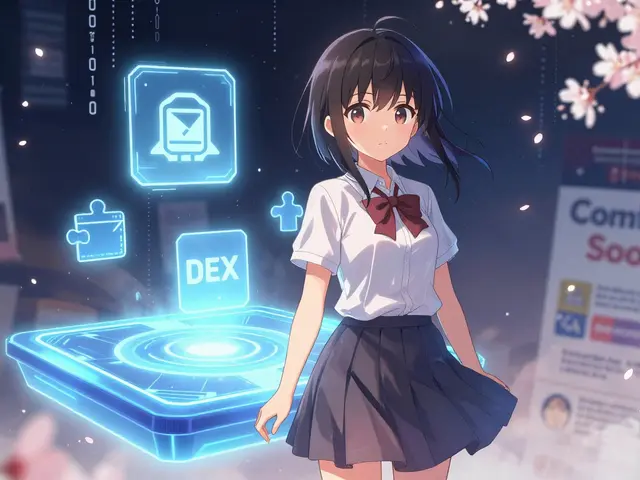A plain‑English guide explains what Agoric (BLD) is, its JavaScript‑first design, technical basics, and how the token works in DeFi.
Agoric – Bridging JavaScript and Decentralized Finance
When working with Agoric, a platform that lets developers write smart contracts in JavaScript on a secure, scalable blockchain. Also known as Agoric Platform, it connects mainstream web development tools with decentralized finance ecosystems.
Why JavaScript matters on a blockchain
Developers love JavaScript because it powers most web apps, but until recently they couldn't deploy the same code on-chain. JavaScript, the lingua franca of front‑end development becomes a first‑class citizen in Agoric's environment, meaning you can reuse libraries, testing frameworks, and IDE plugins without learning a new language. This reduces the learning curve and speeds up prototyping for Agoric projects.
Because JavaScript runs inside Agoric's secure vat system, each contract executes in isolation, preventing bugs from spilling over. This design mirrors the way modern browsers sandbox code, offering developers a familiar mental model while delivering blockchain‑level security.
Smart contracts are the building blocks of DeFi, and Agoric makes them more approachable. Smart contracts, self‑executing code that enforces agreements without intermediaries written in JavaScript can now power lending pools, automated market makers, and token issuances. The platform's object‑capability model ensures that contracts only access the resources they're explicitly granted, which aligns perfectly with DeFi's need for trustless interactions.
DeFi platforms benefit from this safety net because they can expose programmable money to end‑users without exposing the entire system to risk. In practice, this means a developer can launch a new stablecoin or a yield‑farming strategy in weeks rather than months, leveraging existing JavaScript tooling and community support.
Interoperability is another key advantage. Agoric is built on the Cosmos SDK, a modular framework for creating interoperable blockchains, which lets Agoric zones communicate with dozens of other chains via the IBC protocol. This means assets can flow freely between Agoric and networks like Terra, Osmosis, or any Cosmos‑based chain, expanding liquidity options for DeFi apps.
When a developer launches a contract on Agoric, they can instantly tap into the broader Cosmos ecosystem for price feeds, oracle services, and cross‑chain swaps. The synergy between Agoric’s JavaScript environment and Cosmos SDK’s interoperability creates a powerful stack for building multi‑chain DeFi products.
Beyond DeFi, the platform supports decentralized autonomous organizations (DAOs). By writing DAO governance logic in JavaScript, teams can embed complex voting rules, token‑based incentives, and automated treasury management directly into their smart contracts. This flexibility encourages innovative governance models that adapt to community needs without hard‑coding constraints.
DAOs built on Agoric benefit from the same security guarantees as any other contract: the capability system ensures that only authorized members can trigger sensitive actions, while the underlying blockchain provides immutable audit trails. The result is a transparent, auditable governance layer that feels as natural as building a web app.
Web3 user experiences also improve with Agoric. Because the front‑end and back‑end can share the same language, developers can write full‑stack applications where the UI directly interacts with on‑chain logic without translation layers. This reduces latency, lowers development overhead, and makes it easier to debug issues across the stack.
Security remains a top priority. Agology’s formal verification tools let developers prove properties about their contracts before deployment, catching edge‑case bugs early. Combined with the capability model, this offers a defense‑in‑depth approach that rivals traditional smart‑contract platforms while staying accessible to JavaScript developers.
All these pieces—JavaScript familiarity, robust smart‑contract capabilities, Cosmos‑based interoperability, DAO-friendly design, and strong security—form a cohesive ecosystem that empowers anyone passionate about blockchain to turn ideas into live DeFi products quickly.
Below you’ll find a curated list of articles that dive deeper into each of these areas, from practical guides on writing JavaScript contracts to analyses of cross‑chain DeFi strategies using Agoric. Explore the resources to see how you can start building today.





